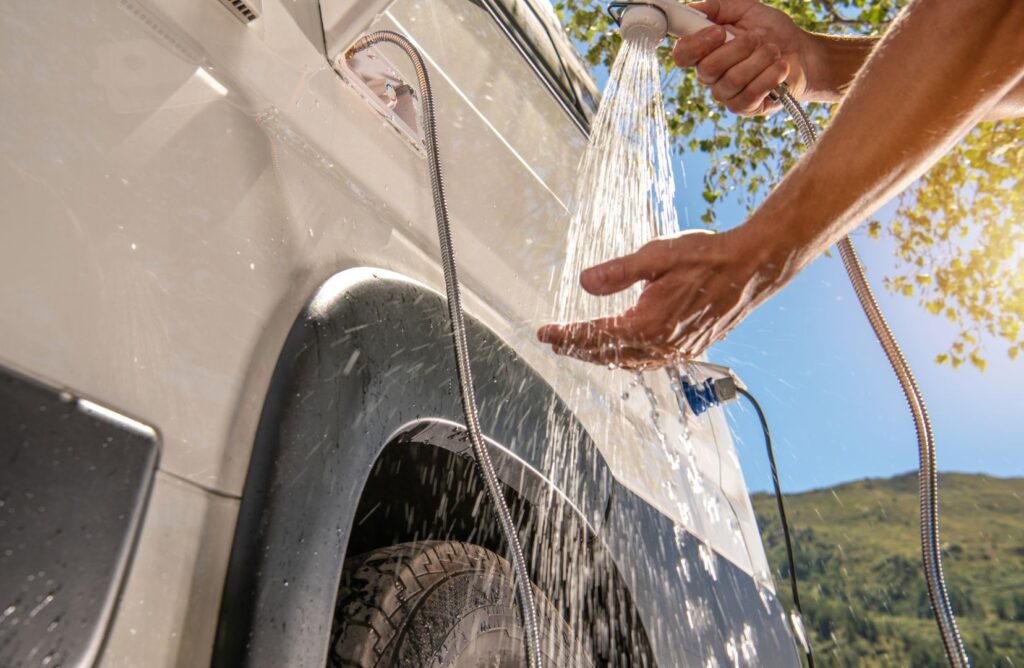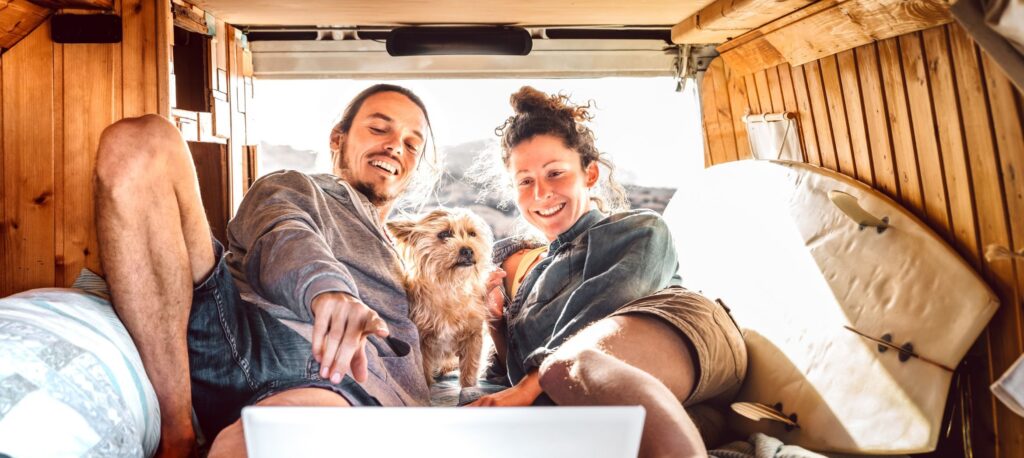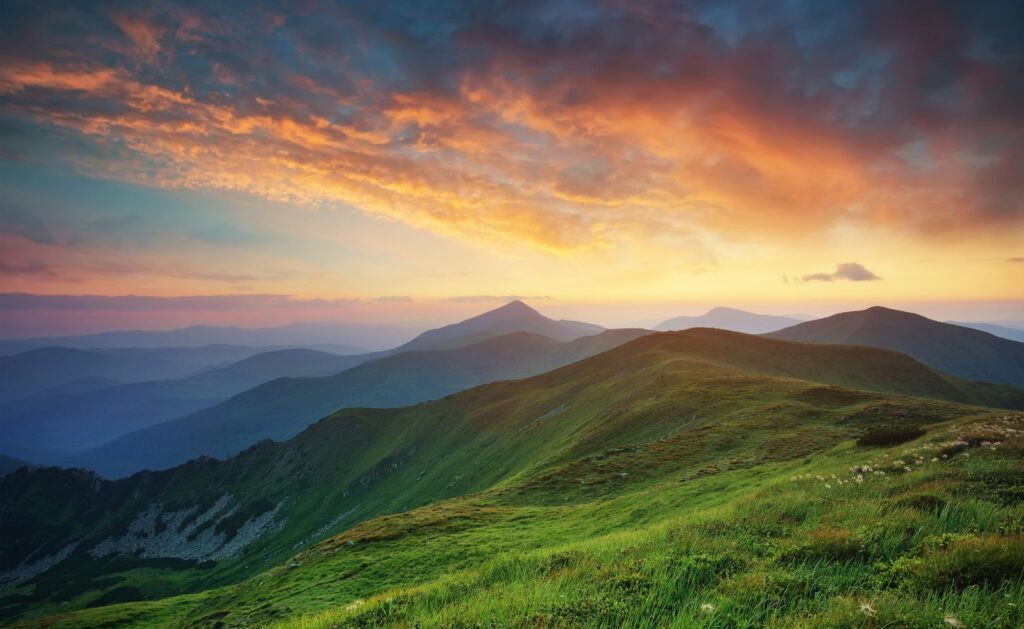A road trip from Las Vegas to Death Valley National Park doesn’t look like much on the map. The two locations are only 130 miles apart and situated on the same highway. You can drive the distance in just under three hours – barely enough time to warrant a bathroom stop.
What this route lacks in distance, however, it makes up for in diversity: different climates, jaw-droppingly contrasting landscapes, and the juxtaposition of Las Vegas – that bright, gaudy “Sin City” – with the occasional ghost town you’ll see along the way.
With all that in mind, we put together this brief itinerary of a Death Valley day trip from Las Vegas so that you can get the most out of this spectacular drive. If you visit Las Vegas and plan to visit Death Valley National Park by camper van, this is an excellent way to do it.
Table of Contents

Red Rock Canyon National Conservation Area
Red Rock Canyon is only about a 20-minute drive West from Las Vegas and makes a great first stop on this little road trip. The park offers a one-way 13-mile scenic drive through a breathtaking section of the Mojave Desert, where you’ll see towering red sandstone, Native American petroglyphs, and the Keystone Thrust Fault.
There is a visitor center providing information about the area, plus plenty of hiking trails, campsites, and places to stay if you’d like to extend your visit.
Calico Ghost Town
The town of Calico was established during California’s Silver Rush during the 1880s and boomed for about ten years before it was abandoned in the mid-1890s when the price of silver tanked. In the 1950s, Walter Knott purchased and restored Calico to look as it did in the 1800s, maintaining its “Old West” feel and turning it into a tourist attraction.
These days, Calico Ghost Town Regional Park is part of the San Bernadino parks system and welcomes thousands of visitors every year. In addition to exploring the historic buildings and learning about the mining operations that went on in the town, you can find hiking, restaurants, off-roading opportunities, and camping.
The park entrance fee for RVs overnight is $30 without hookup or $40 with hookup.
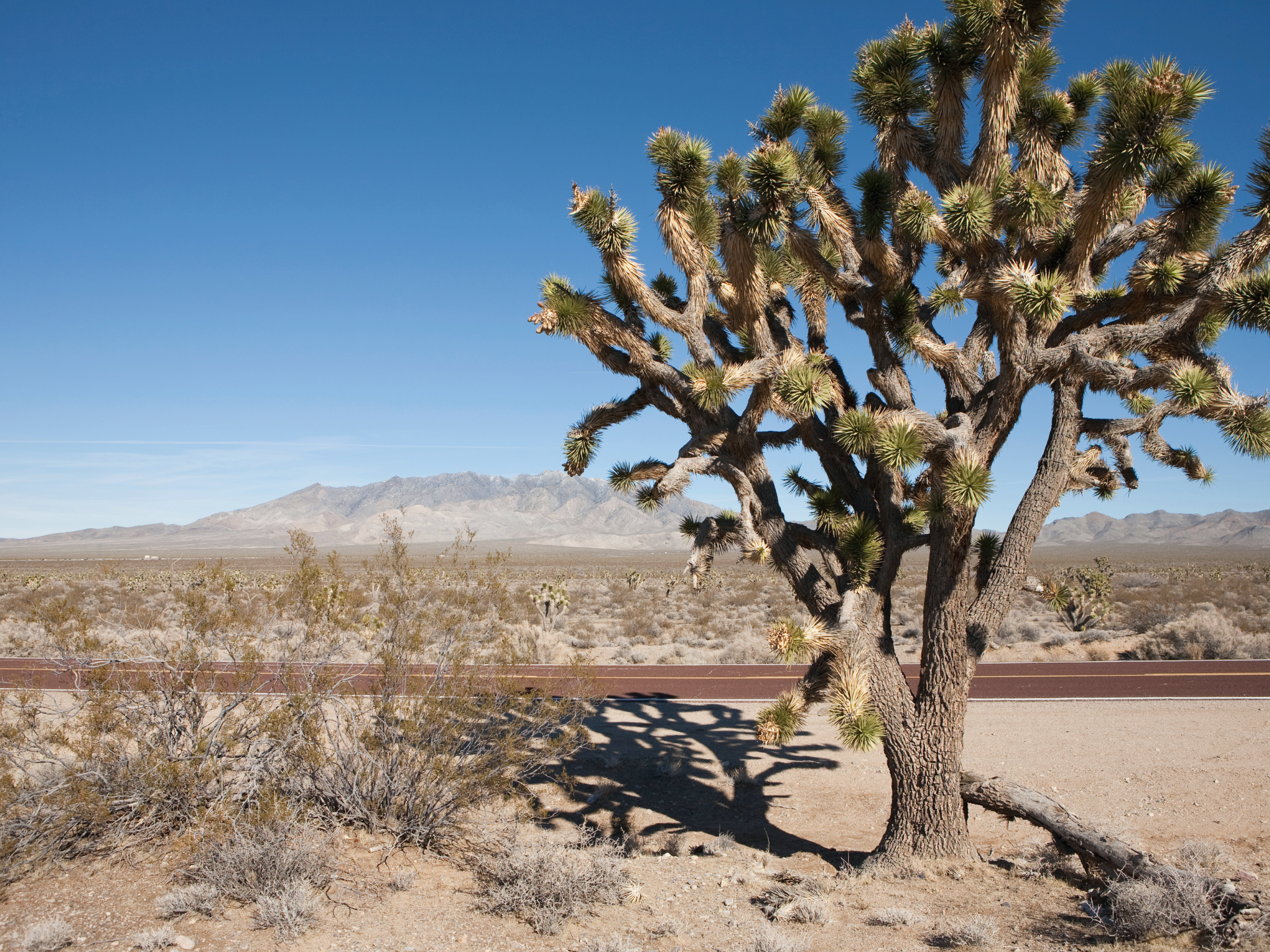
Mojave National Preserve
Mojave National Preserve is one of many national preserves in the Western United States. It gets far less attention than Death Valley National Park, but we believe deserves so much more! The preserve encompasses a diverse range of habitats and landscapes and offers the opportunity to experience the wilderness that is the desert.
Campsites can get crowded on the weekends, so be sure to book ahead if you plan to spend the night. If you enjoy hunting, backpacking, horseback riding, or hiking, this preserve has it all!
Rhyolite Ghost Town
Rhyolite Ghost Town is about 130 miles from Las Vegas and sits on the eastern border of Death Valley National Park. The town was established in 1905 when gold was discovered in the hills surrounding the town. Rhyolite was one of several towns that popped up in the area, which was known as the Bullfrog Mining District.
Rhyolite boomed almost overnight, with backing from Charles Schwab, and became the hub of mining activity in the area. With real sidewalks, electricity, a hospital, and a train station, it was by far the most established mining town in the area.
Rhyolite’s bust happened almost as quickly as its boom. As the gold began to run out, the town fell into decline, and the devastating San Francisco earthquake of 1906 finished it off. Today it is run as a tourist operation, offering a visitor center and some extremely photographable ruins for your Death Valley day trip.
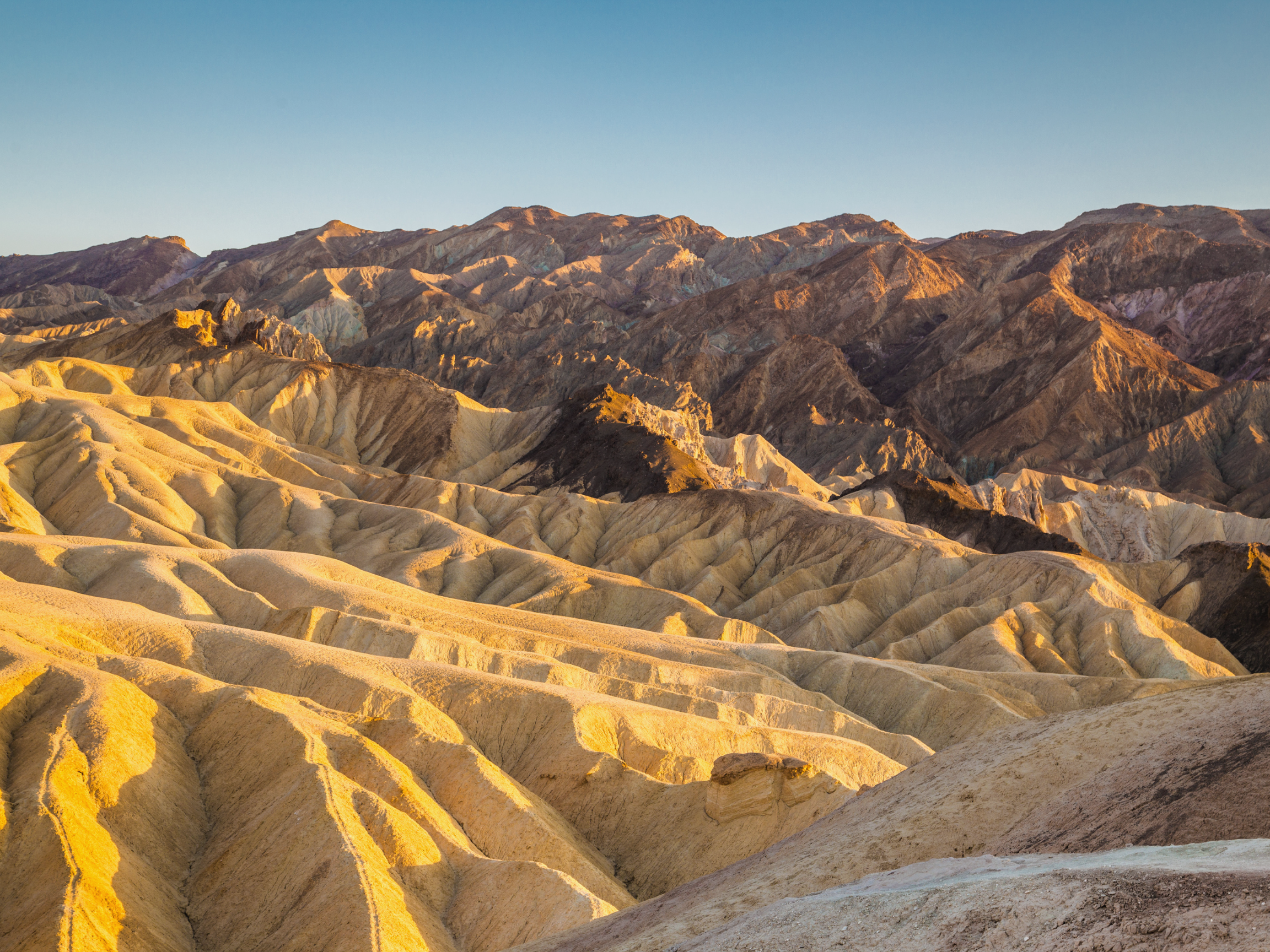
Death Valley Junction
If ghost towns are something you’re interested in, Death Valley Junction makes a fascinating stop. The town came to life in the early 1900s on the back of the mining industry that dominated the area. Unlike other towns in the region, though, Death Valley Junction – also known as Amargosa – didn’t go bust.
Rather, the town slowly fell into disrepair. In the 1960s, a singer and actress named Marta Beckett happened to get a flat tire there, fell in love with it, and turned the decrepit old hall into an opera house. She performed there until 2012, attracting visitors from Las Vegas and all over the world.
Today, the hotel attached to the opera house still operates – but gets few visitors. If you’re into funky old hotels and want a nice place to wake up to catch the sunrise at Zabriskie Point, this is a must-see stop.
Inside Death Valley National Park
Death Valley is the lowest point in the United States and the hottest and driest place on earth. It’s also a ruggedly beautiful place to visit, with striking snow-capped peaks, wildflowers, and a surprisingly diverse ecosystem.
Here are a few of the must-see stops on your Death Valley National Park itinerary.
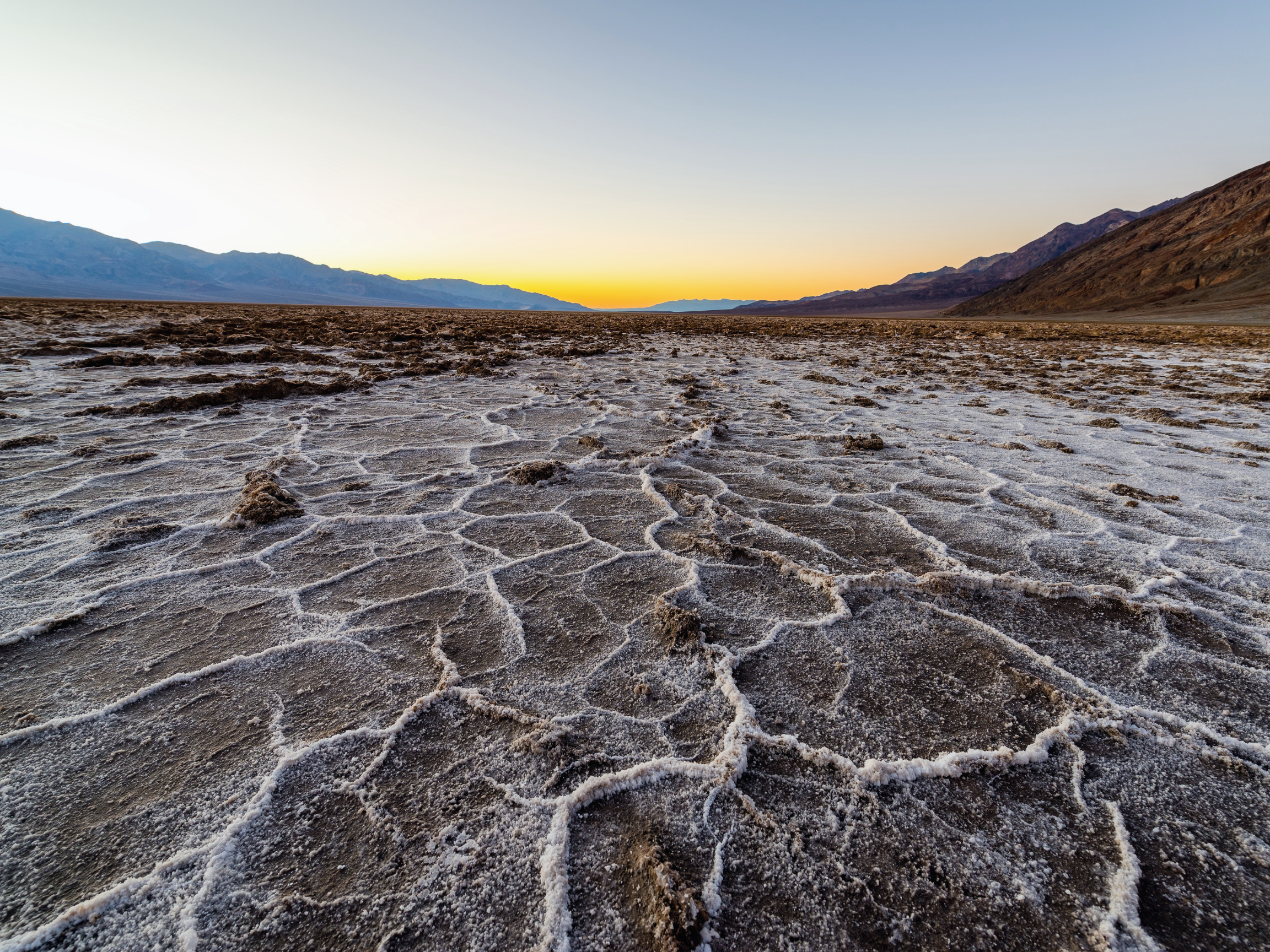
Badwater Basin
Badwater Basin is the lowest point in North America at 86 miles below sea level. What makes this geological phenomenon even more unusual is that the highest point in North America (Mt. Whitney) is just 80 miles away!
The basin is home to the famous Death Valley salt flats, which make a stark and stunning place to snap some pictures. The name “badwater” refers to the salinity of the water, which is so salty it is undrinkable. The area was once the site of Lake Manly, which evaporated tens of thousands of years ago, leaving behind the deposits that make up the salt flats.
Zabriskie Point
Zabriskie Point is an iconic Death Valley stop and a spectacular place for watching the sunrise or sunset. The Zabriskie Point parking lot is a 15-minute drive east from the Furnace Creek visitor center, and the point itself is a fairly easy 1/4 mile hike up a paved road from there.
The Badlands Loop Trailhead can also be found in the parking lot, for those interested in a longer hike or backpacking in the wilderness.
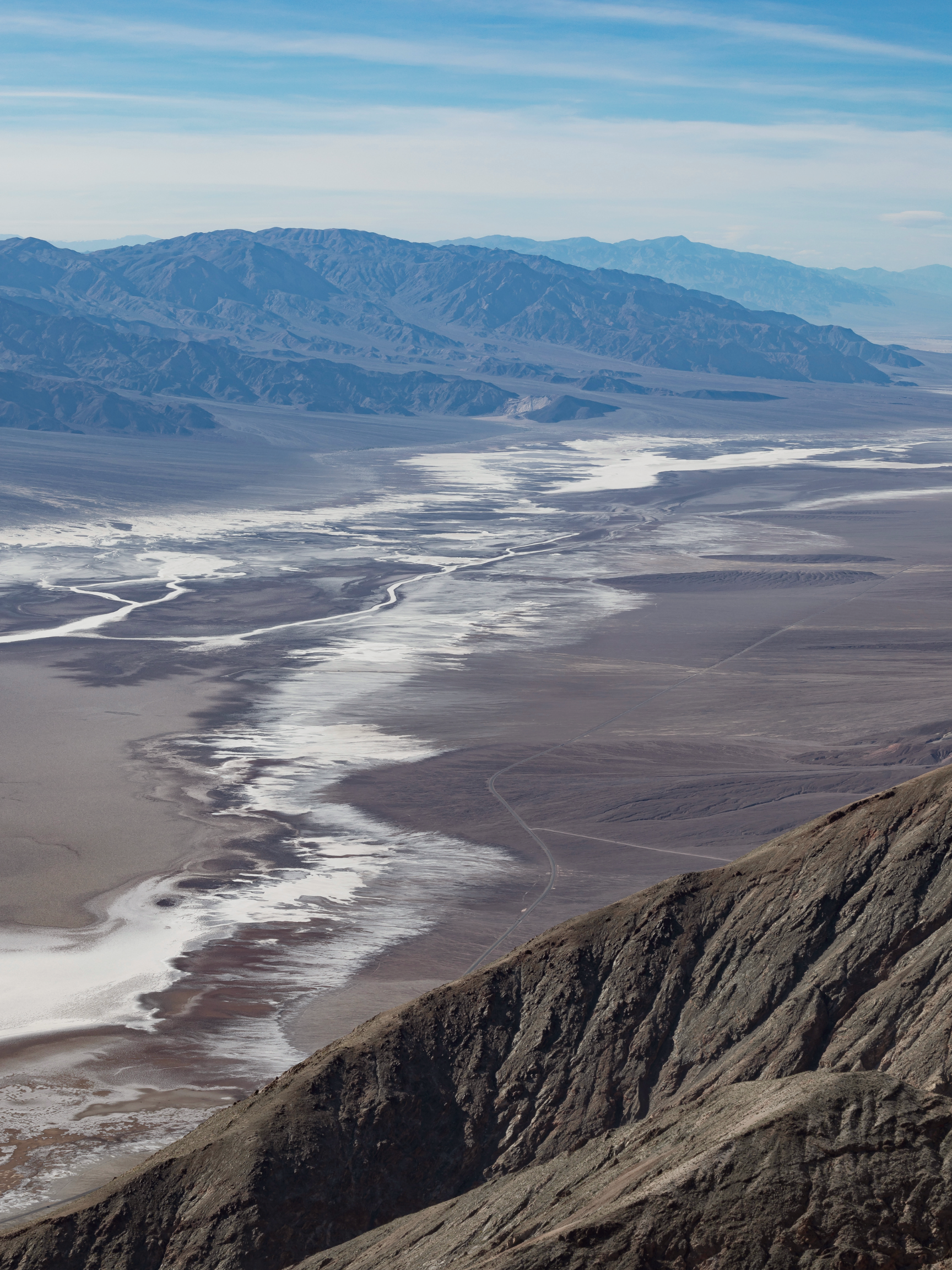
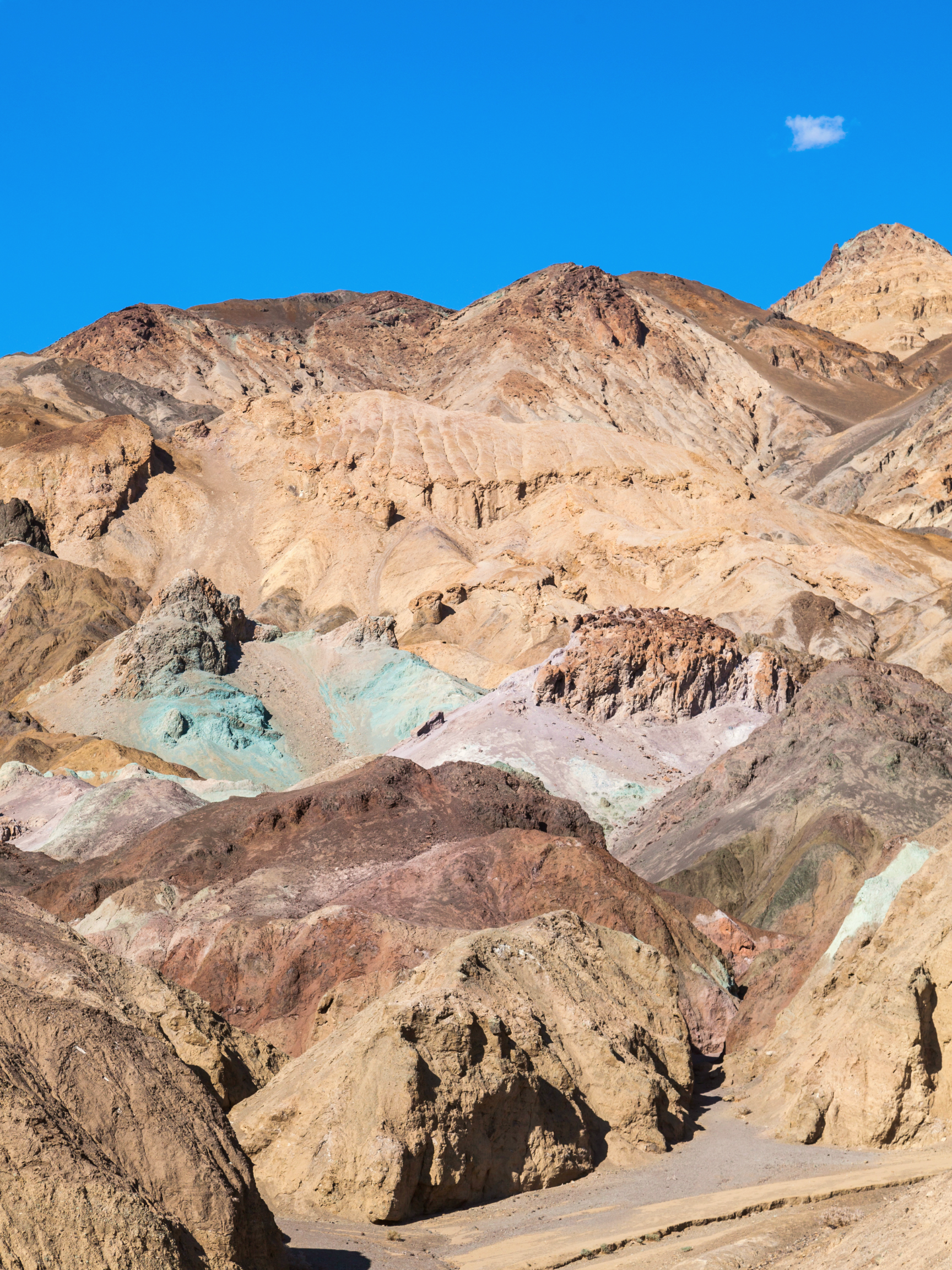
Dante's View
Dante’s View is so-called because, during the days of the Borax mining operation running out of Death Valley Junction, the miners there thought the view was reminiscent of Dante’s description of the nine circles of hell in The Divine Comedy. Perhaps that’s why the peak just to the left of the viewpoint is called Coffin Peak.
From this peak, you get a breathtaking panoramic view of the Death Valley basin, including the Devil’s Golf Course, Badwater Basin, Telescope Peak, and the Owlshead Mountains.
Artist's Palette
For another stunning view, check out Artist’s Palette, which gives you a vantage point to see the incredible, multicolored hills that are evidence of Death Valley’s volcanic history. An array of colors, from blue to red, to yellow, green and purple, are visible in the hills. The colors were left by volcanic deposits of minerals like iron oxides and chlorite.

Mesquite Flat Sand Dunes
The Mesquite Flat Sand Dunes were named for the mesquite trees that grow abundantly in the dunes’ harsh conditions. The trees are short and twisted as the trees must twist their trunks as they grow to avoid being buried by the ever-shifting sands on the dunes.
During the spring, the Mesquite Flat Sand Dunes explode into vibrant yellows and greens as the trees bud and flower. Bean pods collected from the trees can be crushed into flower, which is available in specialty food stores in the surrounding area.
Furnace Creek Ranch
Furnace Creek Ranch is where the record-breaking temperature that earned Death Valley the title of “hottest place in the world” was recorded in 1913. The air temperature recorded that day was 134 degrees F, a temperature which, surprisingly, has not been surpassed, even as average global temperatures have continued to rise.
Today, the ranch is a full-service manicured resort called The Oasis, complete with a campground, pool, golf course, stores, and more.
In July of 2023, the same month that the hottest average global air temperature in history was recorded, Furnace Creek saw the temperature again approaching that record at 128 degrees F. Temperatures above 130 F have only been recorded a handful of times on Earth, and usually in Death Valley.
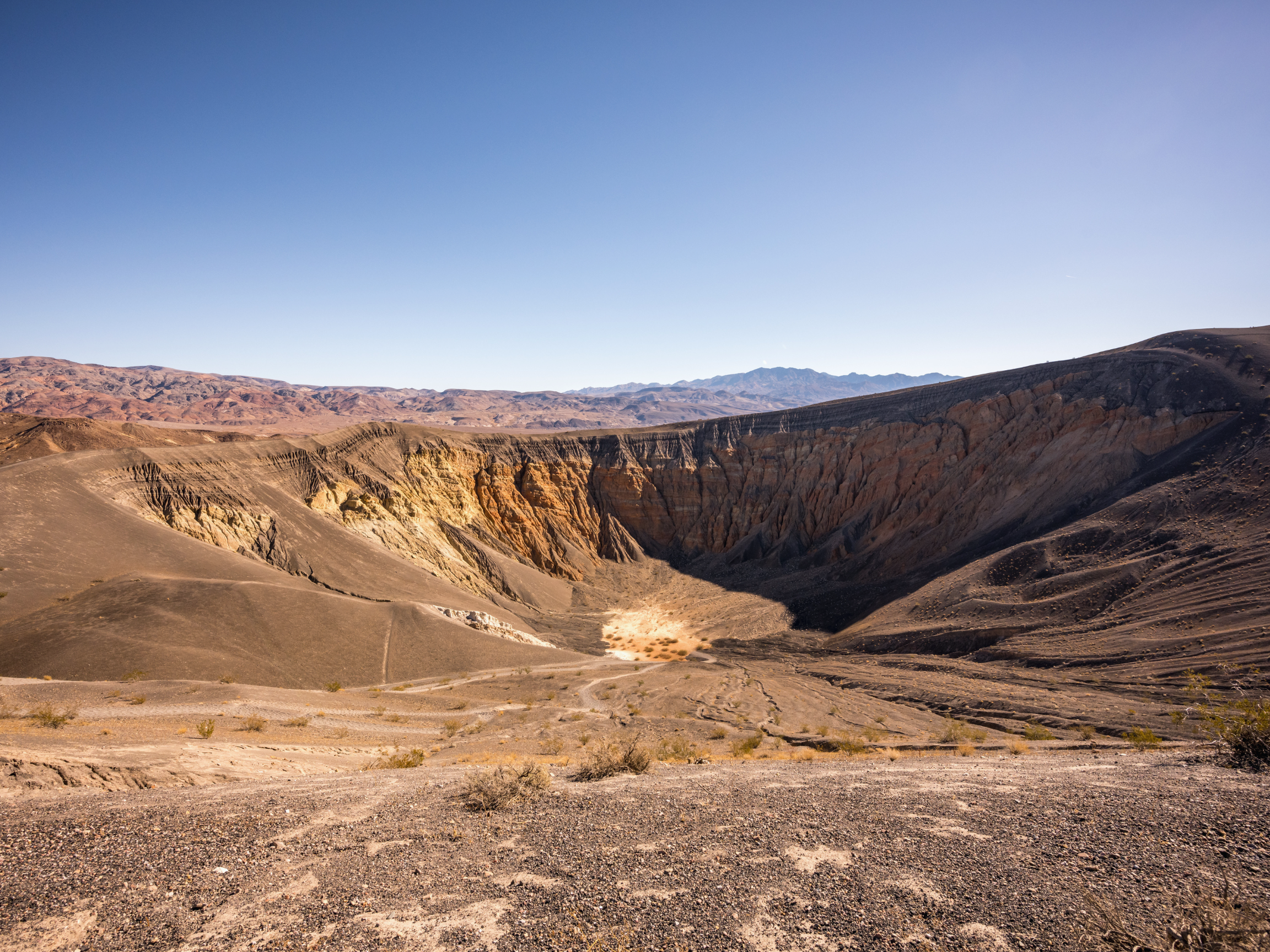
Ubehebe Crater
Just past Furnace Creek is the Ubehebe Crater, a volcanic crater 600ft deep and half a mile in diameter. The crater was created approximately 2000 years ago when magma rising up from the earth’s center collided with cool groundwater, creating a steam and gas explosion.
Titus Canyon
Titus Canyon is the most visited Death Valley road, and for good reason. It starts at Rhyolite ghost town and offers a one-way drive through spectacularly colorful cliffs, where you can view wildflowers, animals, petroglyphs, and more. If you’re short on time, your one-day Death Valley Itinerary should definitely include this route.

Conclusion
A Las Vegas to Death Valley Death Valley day trip is a perfect way to go about visiting Death Valley from Las Vegas – but if you have the time, taking a few more days to explore Death Valley National Park is well worth it! From ghost towns to sand dunes to colorful mountains and diverse wildlife, Death Valley National Park has more life to offer than its name suggests!
Whether you decide to make the trip on one day or rent a campervan and do a multi-day exploration, we hope you Find Your Outside™ from Las Vegas to Death Valley and have the trip of a lifetime!
